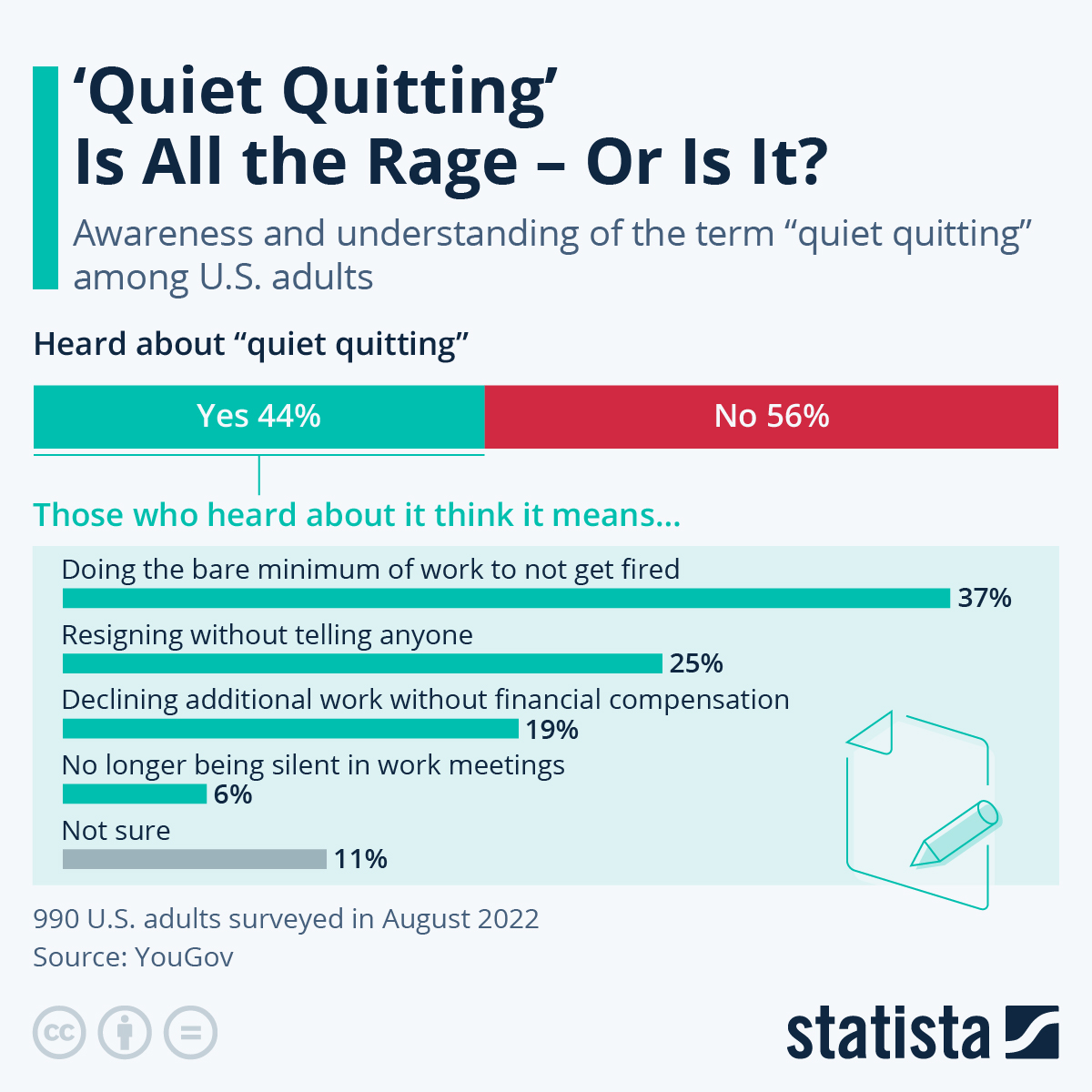What Is the Quiet Quitting Phenomenon? Strategies to Keep Top Talent Engaged
There's been a lot of talk about "quiet quitting" recently, leaving some people confused.
by Nick Schurk - January 12th, 2023
There's been a lot of talk about "quiet quitting" in recent months, and the conversation has left some people feeling confused. Some say that quiet quitting is when an employee leaves their job without telling anyone or giving any notice. According to others, it means employees only do what is required, without taking on any additional responsibilities.
Download the State of HR 2023 Report: The Great Resignation, Recession and Human Resources
Whichever definition you choose, quiet quitting stories have surged through the HR community. In this blog post, we'll explore what quiet quitting is, why it's a problem, and how to avoid it. We'll also provide real-world insight from leaders in HR and business.
What is Quiet Quitting, and Why Is It a Problem?
What is this mysterious phenomenon called 'quiet quitting'? Well, according to HR professionals, it can have two very different meanings.
The first is arguably the more obvious - an employee simply leaves their job without giving any warning or explanation. It’s easy to understand why this is a problem: employers are often unexpectedly left without staff and don’t have adequate opportunities to replace them.
"There are a few plausible reasons an employee might choose to quit without notice," says Tzvi Heber, Founder, CEO, & HR Head of Ascendant Detox. "They may be unhappy with their current job and want to leave as soon as possible. Or, they may have found a new job and want to work there right away. Sometimes, employees may even be worried about retaliation from their boss if they give two weeks' notice."

Source: Statista
The second definition, which is less straightforward, applies to employees who seem to be doing their job requirements but no more - nothing with particular enthusiasm or effort. This so-called ‘quiet quitting’ vexes many employers because of the relative difficulty of inspiring productivity from employees who remain on the payroll yet appear unenthused about working hard.
"As an HR leader, I believe that there is no such thing as 'quiet quitting'," says Jarir Mallah, HR Specialist at Ling App. "This idea and new buzzword have grown out of the concept that employees should always do more, and that being busy means being productive. However, what an employee believes are their responsibilities and what upper management believes are their responsibilities may be two entirely different things."
Quiet Quitting's Impact In the Workplace
Despite HR professionals' disagreement, on a single definition, it's clear that quiet quitting is putting people on edge. According to SHRM, more than half of HR professionals are worried about quiet quitting. 83% of these HR pros believe it will decrease employee morale in the workplace, and 50% fear a decrease in the quality of employee work.
According to HR leaders, quiet quitting is not a new phenomenon, though it can have far-reaching implications if left unchecked. There have always been employees who stay in their positions but either suppress their ambition, just see work as a means to an end, or both. Whatever the reason, there have always been members of the workforce who generally don't put anything extra into their work.
While this results in little or no disruption for an employer in the short term, studies reveal that employees who feel empowered and driven are much more likely to be productive and take on more ambitious roles when presented with the opportunity.
How HR Leaders Can Address Quiet Quitting
HR leaders across the globe are exploring how to combat quiet quitting. We asked 5 HR and business leaders how they address this issue from a human resources perspective, how to catch and confront issues early on, and how to help employees cope with stressors causing them to consider leaving. With these strategies in hand, organizations have a plan for preventing costly losses that could arise from prolonged disengagement from employees.
Know the Difference Between Bad Climate vs. Bad Weather Days
"I define quiet quitting as an employee with a 'bad climate' rather than an employee that's just having a 'bad weather day.' We all have phases in our careers where we experience some burnout. If the team member is willing to push through that phase and ‘rally’ then it's a phase rather than a quiet quitter.
"If you want to combat quiet quitting, recognize your team members for their day-to-day efforts. Gratitude goes a long way to re-engaging your talent!"
Logan Mallory, Vice President of Marketing at Motivosity
Conduct an Appreciative Inquiry Exercise
"Historically, the way that our employees choose to behave within the organization has always been in direct response to our values, mission, and strategy, and how connected and committed our employees feel to them.
"Employers who have defined these areas well rarely struggle with attracting, keeping, and engaging employees who feel intrinsically motivated and energized in their roles. They have designed their people programs in such a way that proportionally recognizes and rewards employee contributions and positive behaviors.
"For organizations challenged by quiet quitting, I recommend conducting an appreciative inquiry exercise to help understand how their employees perceive the organization, then using those insights to create more meaningful alignment to the values, mission, and strategy."
Tyren Thompson, Compensation Partner at Zoom
Design a Culture of Open Communication
"Employers need to be proactive in creating a workplace that is conducive to open communication. This means having regular check-ins with employees and being receptive to feedback. Additionally, employers should make sure that their policies are clear and that employees understand the consequences of quitting without notice."
Tzvi Heber, Founder, CEO, & HR Head at Ascendant Detox
Create an Engaging Workplace Culture
"To combat quiet quitting in our workplace, we've encouraged managers to reach out to their employees and find meaningful ways to keep them engaged. This helps managers understand the interests of their employees and create an atmosphere where they feel included. It also encourages them to work beyond their capabilities to honor the personal connections in the team."
Alan Carr, Director at Webpop Design
Make Sure Expectations Are Clear
"In order to remedy any suspected so-called quiet quitting behavior, managers should meet with teammates individually and redefine their expectations and roles together. Further opportunities for development should be communicated as well to promote growth.
"It’s important for workers to see a career path to prevent actual stagnation. Steps should be outlined and made clear on how to achieve promotion or gain experience to change positions within the company. "
Jarir Mallah, HR Specialist at Ling App
Final Thoughts
There's a wide interpretation of what constitutes "quiet quitting," but our conversations with HR professionals revealed one thing: quiet quitting has a significant impact on a business’s workflow. It's important to think through how you can make sure all employees feel connected to their work. With some planning, employers can create an awesome strategy for keeping employees engaged, satisfied, and productive. A great way to start is by taking a tour of GoCo, which offers features specifically designed to improve the employee experience - from tracking engagement levels to streamlining administrative tasks. So what are you waiting for? Take a tour today!
Recommended Posts
22 Employee Engagement Ideas That Remote Workers Love
Blog Articles
Search...
Product
GoCo
Resources
Articles
eBooks
Webinars
Customer Stories


